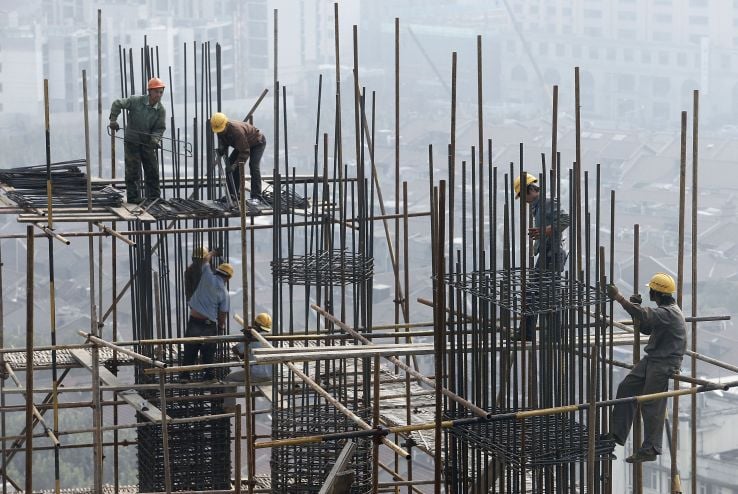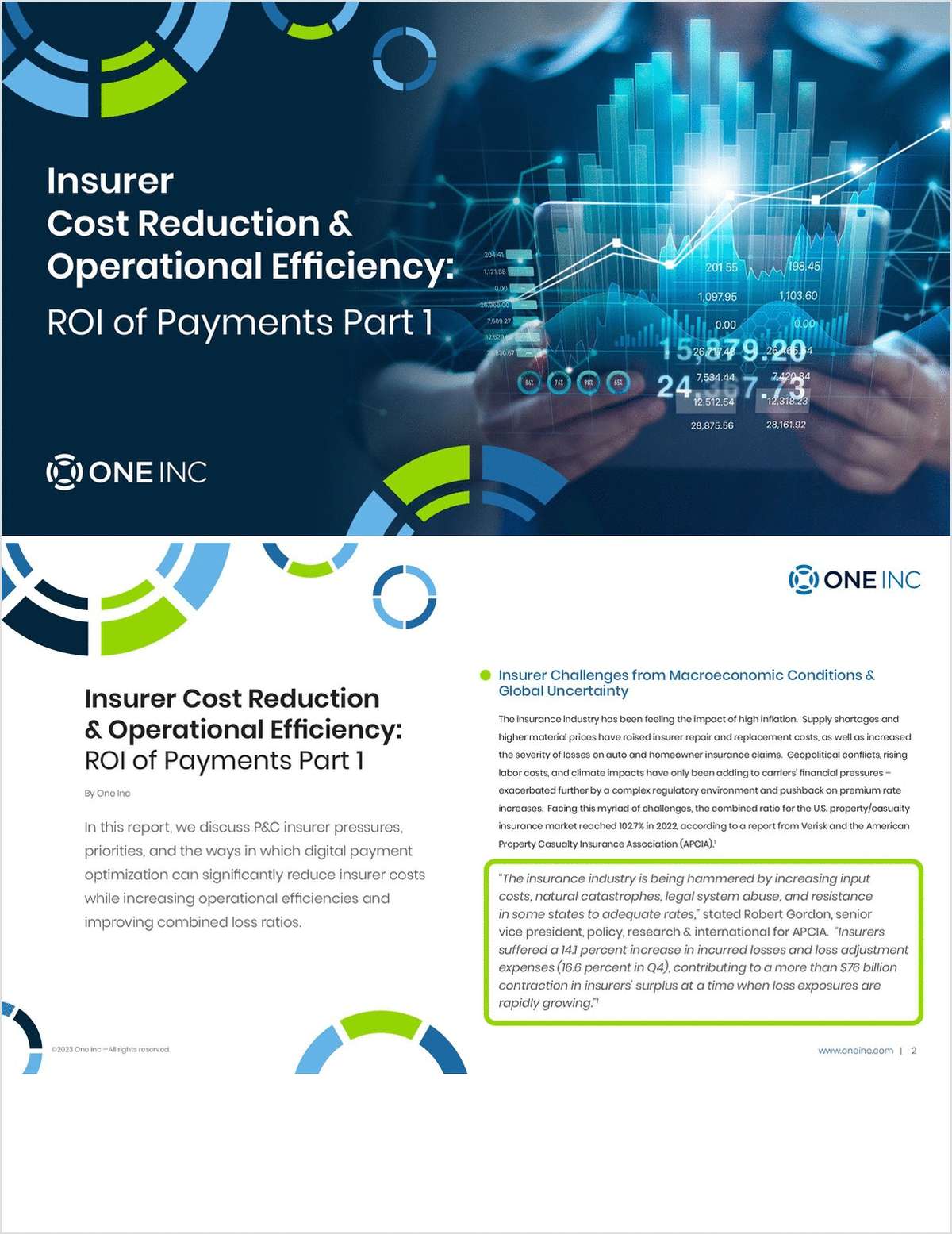Construction projects are complex and potentially messy undertakings.
Both the owner and general contractor face a swarm of unpredictable variables, and liability insurance can lead to a construction project's long-term success or disastrous ruin.
For potential financial advantages, coverage enhancements, collective coverage uniformity, and coordinated claims handling, a wrap-up policy may be the smartest choice for success.
|What is a wrap-up?
What exactly is a wrap-up? It's a general liability and/or workers' compensation/employer's liability policy covering all participating contractors on a construction project under one primary insurance policy from the project's construction phase to its completed operations phase.
The traditional wrap-up policy approach was developed as a combined program with the same insurance carrier for both primary general liability and workers' compensation/employer's liability on mega-infrastructure projects. Once a predominantly standard market product, there is now a robust “GL-only” wrap-up market in the non-standard marketplace.
Having one party collectively purchase insurance for all contractors on a specific project was a major breakthrough in a world of individual policies. The individual approach is still widely used today, but due to varied carriers, rates, terms, conditions, coverages, and the unpredictable nature of future renewals, the wrap-up policy has emerged as a viable and often preferred alternative.
The opportunity to purchase a wrap-up extends to virtually any size project and segment of the construction industry. While most traditional wrap-ups cover projects of $100,000,000-plus, construction projects with costs smaller than $1,000,000 have been written on a GL-only wrap-up basis.
|Financial feasibility
All wrap-ups, whether traditional or GL-only, carry their own set of financial and administrative burdens that make it impossible to completely eliminate individual insurance buying. In the current marketplace, the main reason a wrap-up won't work on every construction project is due to financial feasibility.
For example, a sub-$1,000,000 construction project is quite small for a wrap-up as insurance companies tend to have minimum premium thresholds. This makes even the most risk-averse insurance buyer not want to pay the wrap-up's price tag. However, there are reasons for a Wrap-Up beyond up-front financial savings. The first non-financial factor is coverage enhancements.

Wworkers labor at a building construction site in Shanghai, China. (AP Photo/Eugene Hoshiko, File)
|Unique coverage endorsements
Wrap-ups take on a number of unique coverage endorsements that are rarely, if ever, found on an individual GL policy for a contractor. The inclusion coverage-enhancing endorsements may entice someone with a sub-$1,000,000 construction project to spend more up-front money on a wrap-up.
Other advantages of wrap-ups are the simplification of claims handling and reduction in the number of competing interests. In the event of a construction-related liability claim, the collective mindset of the contractors plus the coverage uniformity provided under a wrap-up policy creates a stronger, single-entity defense against a lawsuit.
When everyone is relying upon the same policy, it makes legal firms less incentivized to start costly infighting among the contractors involved. This allows insurance carriers to charge less for a wrap-up policy than an individual one.
|Reliable GL insurance coverage
That said, the integral reason why the GL-only wrap-up exists isn't because of an overwhelming desire to get the best coverage enhancements, collective coverage uniformity, and claims handling factors in one policy. The GL-only wrap-up exists because without it, contractors may have no reliable general liability insurance coverage.
In the late 1990s, the GL-only wrap-up took center stage when new construction defect laws were passed in many states, most notoriously in California. These laws gave new consumer protections to homeowners, but at the same time created a whole new legal industry dedicated solely to targeting and litigating new residential construction projects.
The insurance industry responded to this as any for-profit industry that suddenly started experiencing horrendous losses from area would — they stopped writing that sector of business. In turn, contractors couldn't find reliable, affordable residential liability coverage to even consider bidding on residential projects.
The fact that most contractors, especially in the burgeoning California marketplace, couldn't find the all-important residential coverage was a huge problem. Thus, the GL-only wrap-up was born.
Another relatively recent event that has increased the popularity of GL-only wrap-ups was the recession. Many contracting firms did not survive the late 2000s downturn, even commercially-focused contractors.
If a contractor is no longer in business, their individual insurance policy is no longer being renewed either, leaving a significant gap in the “tail” coverage for any owner or general contracting firms that hire them. GL-only wrap-ups fill that coverage gap.
|Anti-indemnity statutes
Another state-by-state legal trend known as anti-indemnity statutes took hold in recent years as well. These statutes come in various forms, but their goal is to limit the ability of one party to push their own negligent acts contractually to the firm they are hiring to perform a job on their behalf. The response of many owners/general contracting firms is to write a GL Only Wrap-Up so they don't have to worry about this.
In contrast to the traditional wrap-up, a GL-only wrap-up does not have a reputation for high claims frequency, presumably due to the removal of workers' compensation from the policy. This allows underwriters of GL-only wrap-ups to write significantly lower deductibles with no collateralization requirements, the polar opposite of most traditional wrap-up policies. For example, under a GL-only wrap-up, deductibles average around $25,000 per occurrence with no collateral required, whereas under a traditional wrap-up, retentions start at $250,000 per occurrence with significant collateral requirements.
The wrap-up has also been used to fill a void in the liability marketplace; coverage for an entire industry segment might not exist without it. Insurance coverage uniformity on a construction project helps avoid finger-pointing dilemmas if there is a complicated liability claim. This allows contracting relationships to flourish even after a tough claim, leading to better cohesiveness among project managers and trade workers, which in turn leads to more carefully built projects. And that leads to less claims, which is the ultimate goal.
Everyone involved with financing and constructing these projects saves a little premium money, and the insurance companies don't pay out as much in claims. Is there a better win-win insurance product than this?
Casey Evans, CIC, is area senior vice president/casualty broker for Atlanta-based Risk Placement Services, Inc. (RPS), a full-service property and casualty wholesale brokerage firm.
Want to continue reading?
Become a Free PropertyCasualty360 Digital Reader
Your access to unlimited PropertyCasualty360 content isn’t changing.
Once you are an ALM digital member, you’ll receive:
- Breaking insurance news and analysis, on-site and via our newsletters and custom alerts
- Weekly Insurance Speak podcast featuring exclusive interviews with industry leaders
- Educational webcasts, white papers, and ebooks from industry thought leaders
- Critical converage of the employee benefits and financial advisory markets on our other ALM sites, BenefitsPRO and ThinkAdvisor
Already have an account? Sign In Now
© 2024 ALM Global, LLC, All Rights Reserved. Request academic re-use from www.copyright.com. All other uses, submit a request to [email protected]. For more information visit Asset & Logo Licensing.








